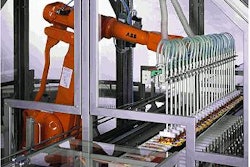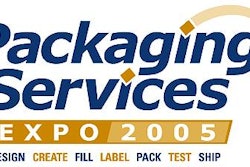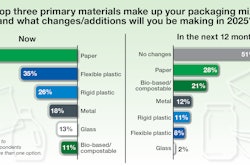Wallace, director process and package development who divulged Ross’s then-current RFID plans in an article Packaging World published last July ‘Go deeper’ on RFID, noted that its Isomil infant formula is the fourth-most frequently stolen product from its top customer, Wal-Mart. Ross installed radio-frequency identification (RFID) equipment in its packaging development lab and began to send RFID-tagged products to Wal-Mart in January 2005.
Initially, tagging was done manually. “We had coding challenges,” Wallace admitted. “We couldn’t get the reader and tag to talk to one another. We did 48 pallets, and then changed readers and tags. After that the process went smoothly.”
Wallace explained that Wal-Mart hopes “RFID technology will help them identify out-of-stock items, a problem that occurs mostly on Saturdays and they don’t know they’re out of stock.”
Wal-Mart’s Simon Langford, who is manager of the retailer’s Global RFID Strategy, spoke at RFID Journal’s RFID Live! conference last week. He told the audience that Wal-Mart associates (store personnel) can replenish only 1 of 12 out-of-stocks that occur on Saturdays.
“They figure RFID technology can reduce out-of-stock lost sales by one percent, or $2.5 billion per year,” said Wallace.
Ownership challenges at Wal-Mart
Reducing out-of-stock products is also a key goal for Abbott, according to Wallace. “We’ll be able to tell where any case is at any time and be proactive in helping Wal-Mart get those cases on the floor. The end game is that Wal-Mart sells its shelf space to the most profitable bidder. They only pay you for what they can scan at the checkout. That means all shipping, stocking inefficiencies, and shrinkage we now own as their supplier. RFID will change that.”
Ross Labs was also involved in Project Jumpstart. “Jumpstart involved pharmaceutical companies, distributors, pharmacy chains, industry trade groups, and the Food and Drug Administration. The most interesting thing about it from Abbott’s perspective was the collaborative approach, with calls regularly made to address issues with labels, 21 CFR, and how the agency worked with us.”
He added, “We learned that the technology to track and trace through the supply chain works, meets customer requirements, facilitates recall, labor productivity, and order accuracy. The implementation will be more complex than initially projected.”
Wallace offered the following tips during his report:
For more information on HealthPack 2005, contact conference manager Innovative Technology Conferences below.
























